12 Warning Signs Your Spider Plant is Overwatered and How to Fix It
If your spider plant is looking a little off lately, too much water might be the reason. Overwatering is one of the most common mistakes and can lead to several noticeable problems. From yellow leaves to a musty smell in the soil, these warning signs are easy to spot once you know what to look for. Catching them early can help you prevent lasting damage and keep your plant healthy. Paying attention to how the leaves and soil behave is a good first step. A few simple changes to your care routine can make a big difference. With the right approach, your spider plant can bounce back and thrive again.
This post may contain affiliate links, which helps keep this content free. Please read our disclosure for more info.
Yellowing Leaves
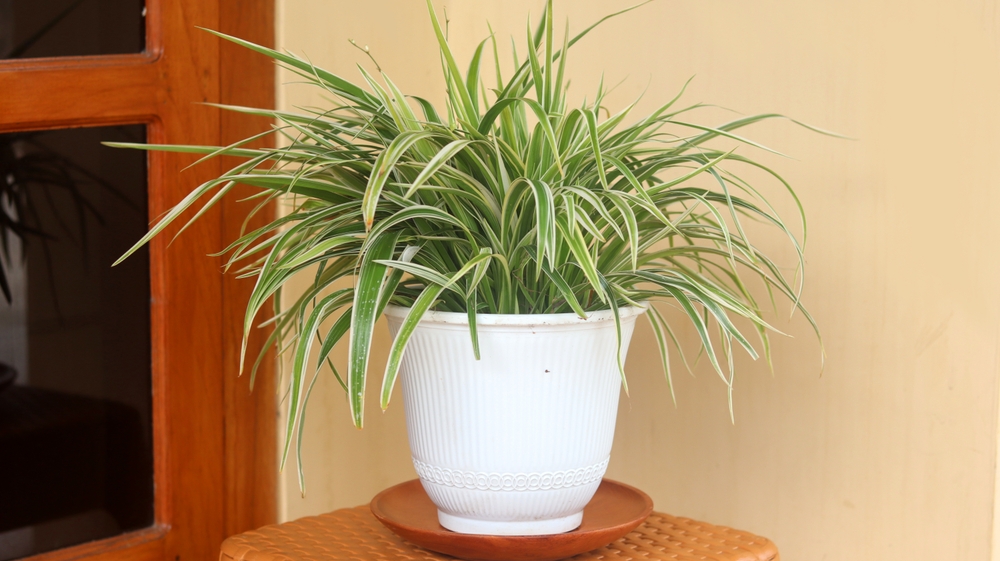
One of the most noticeable signs that a spider plant is getting too much water is yellowing leaves. The leaves may start with a pale green hue and slowly shift to a dull yellow, especially near the base. This happens because the roots are sitting in soggy soil, which limits their ability to take in oxygen and nutrients. Without proper intake, the leaves lose their healthy color.
To prevent yellowing, always check the moisture level before watering. Stick your finger about an inch into the soil. If it feels damp, hold off on watering for a few days. Make sure the pot has drainage holes and that the soil is loose and well-aerated to allow excess water to escape.
Brown Leaf Tips
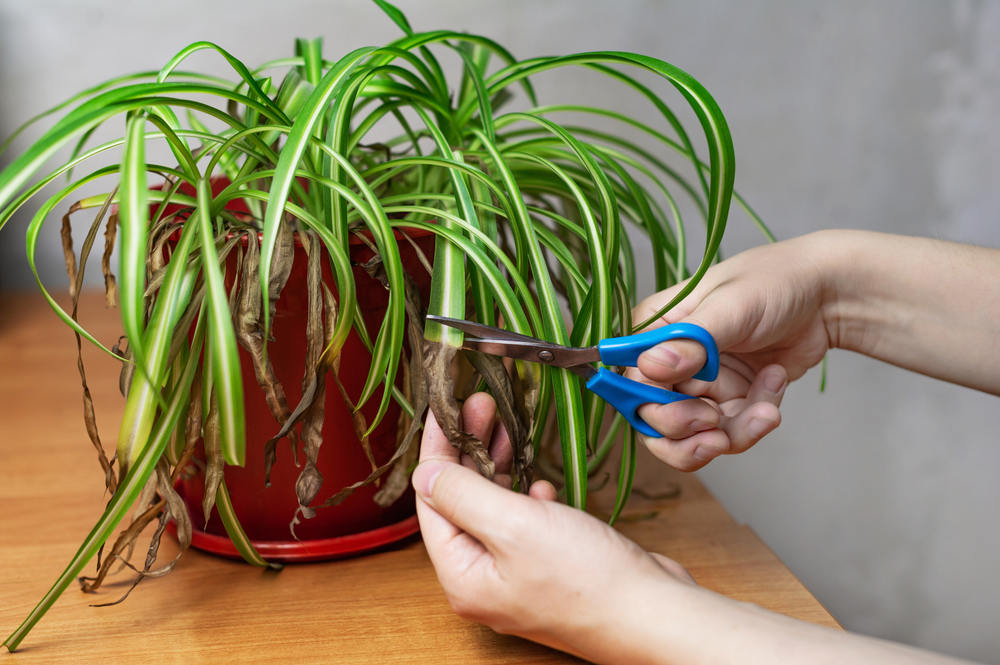
Brown tips are another signal that something is wrong, and while they can show up due to other issues like low humidity or salt build-up, overwatering is often to blame. When the roots are waterlogged, they cannot send nutrients where they are needed, leading to dry or crispy ends on the leaves. Over time, the damage spreads upward, leaving the plant looking dry and unhealthy even though the soil is wet.
To avoid this, water only when the top inch of soil has dried out. You can also switch to filtered water if your tap water is high in salts or minerals. Trim brown tips with clean scissors to stop further tearing and improve the plant’s appearance.
Wilting Despite Moist Soil
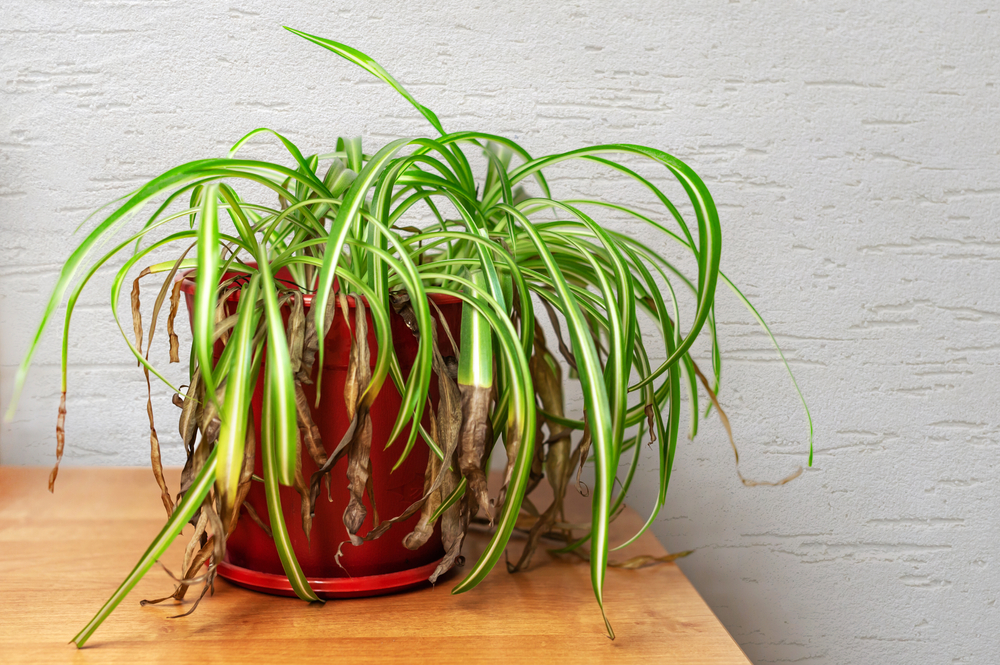
It might seem confusing when a plant looks wilted even though the soil is damp. With overwatering, the roots begin to rot and lose their function, so they can no longer supply water to the leaves. The plant starts to droop and collapse even though it is technically surrounded by moisture.
The best way to handle this is to check the roots. If they look brown or mushy, remove the damaged parts and repot the plant in dry, fresh soil. Going forward, wait until the top layer of soil dries out before giving it another drink.
Soft or Mushy Stems
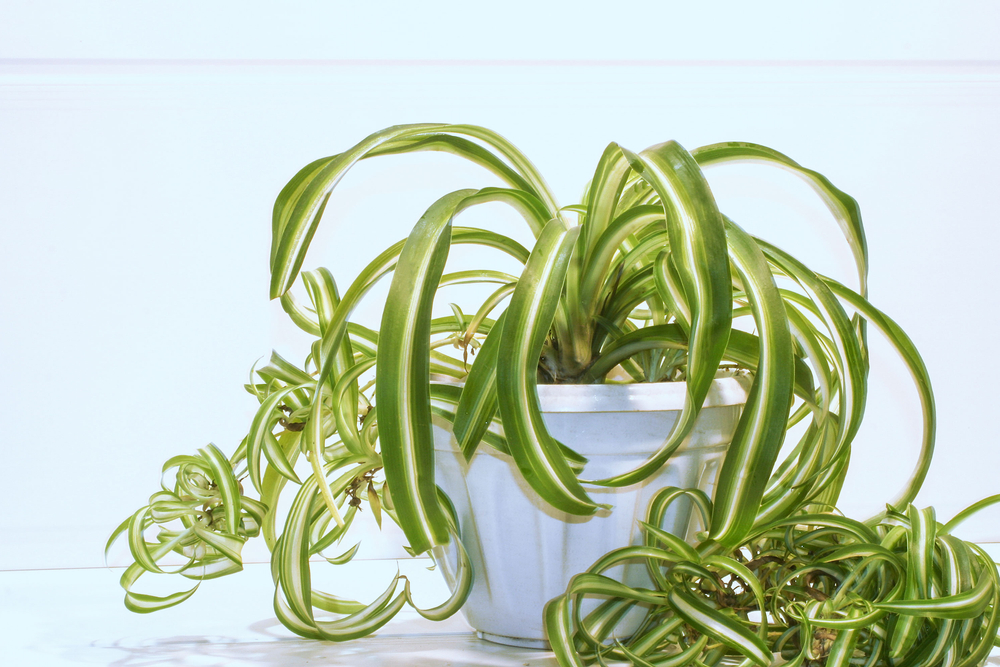
A healthy spider plant has firm, slightly flexible stems that support the arching leaves. When overwatered, the stems may become soft or mushy to the touch. This is usually a sign that the tissue is breaking down due to too much moisture and possible bacterial growth. Left alone, this can lead to stem rot.
To prevent this, make sure the plant is not sitting in a pot that holds water at the bottom. Remove the plant, trim away any mushy parts, and place it in dry soil. Allow the roots to dry slightly before watering again.
Foul Smell from the Soil
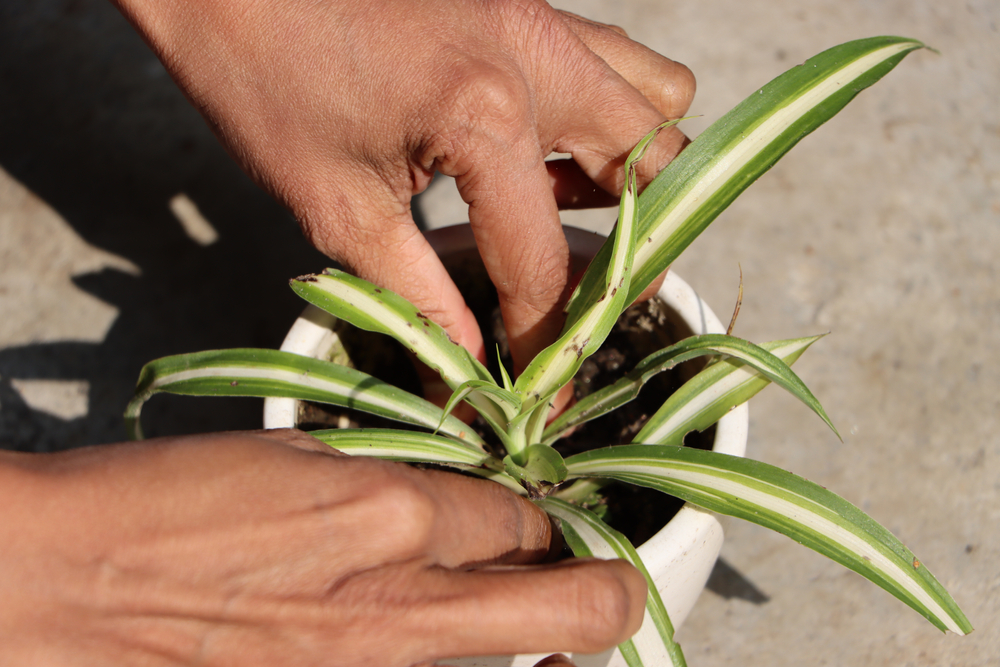
A strong, unpleasant odor coming from the soil is a warning that the roots are rotting. This usually smells like something sour or musty and is caused by excess water creating the right conditions for bacteria and fungi to grow. Once this starts, it spreads fast and can kill the plant if ignored.
To stop this, take the plant out of the pot and inspect the roots. Cut away any that look dark or feel slimy. Clean the pot, replace the soil with a fresh, well-draining mix, and reduce how often you water.
Mold or Algae on Soil Surface
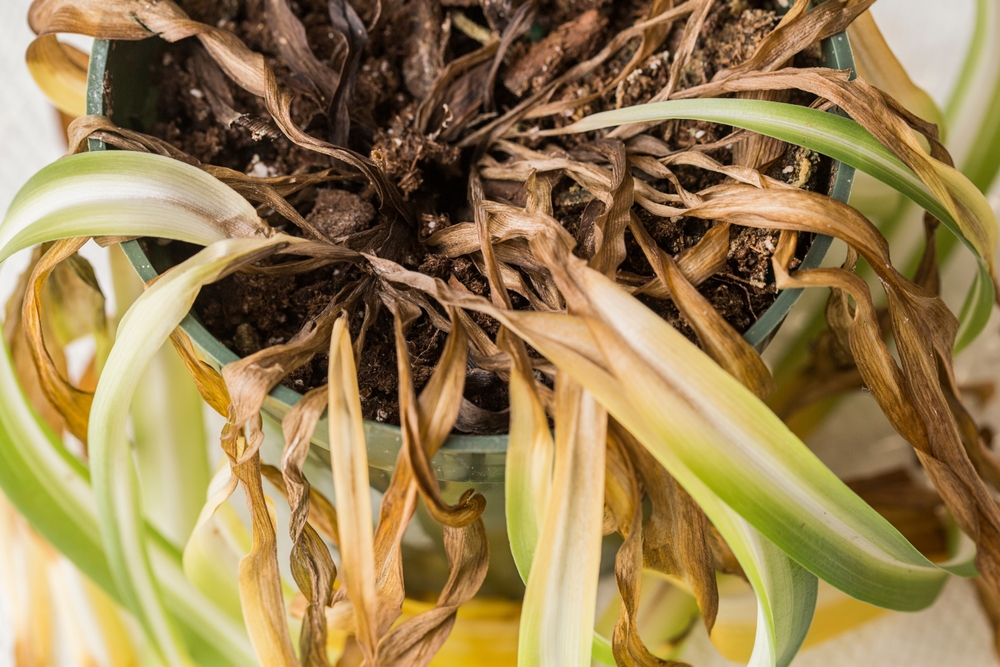
When the top of the soil grows mold or green algae, it means the surface stays moist for too long. Mold and algae thrive in wet, still conditions with poor airflow. Though they may not harm the plant right away, they are a sign that you are watering too much and not giving the soil a chance to breathe.
To fix this, scrape off the mold or algae and replace the top layer with dry soil. Move the plant to an area with better air circulation and make sure the pot drains completely after each watering.
Drooping Leaves
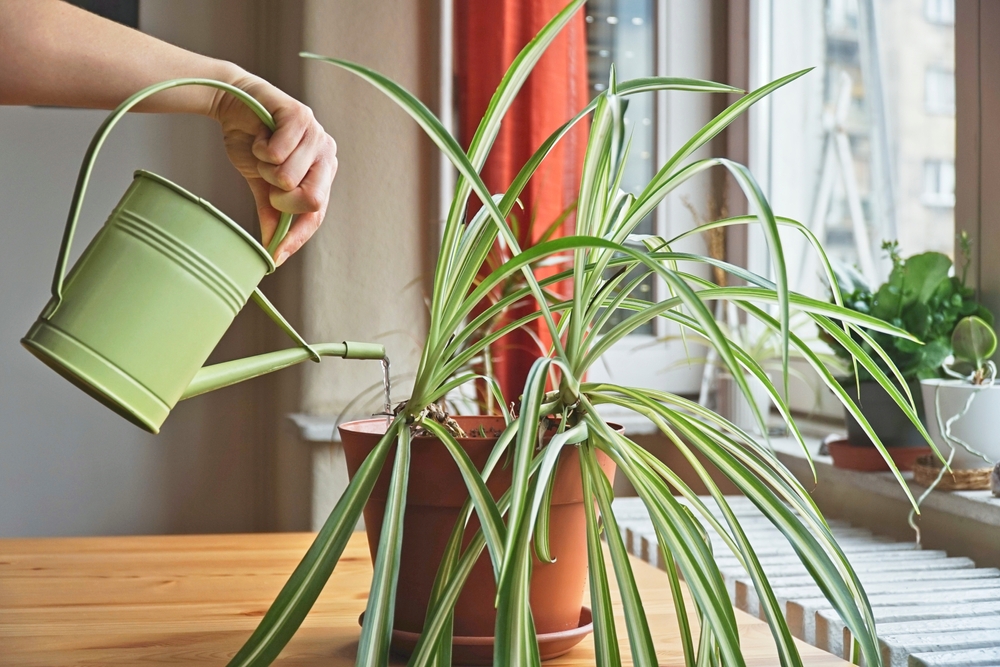
Spider plants usually have perky, arched leaves that grow outward. If you notice the leaves drooping or collapsing, it can mean the roots are damaged from too much water. The plant cannot support its weight when the internal systems fail due to rot.
Try to dry out the soil by placing the pot in a sunny, well-ventilated spot. You can also remove the plant, check the roots, and replace soggy soil with a lighter mix to allow better airflow.
Leaves Falling Off Easily
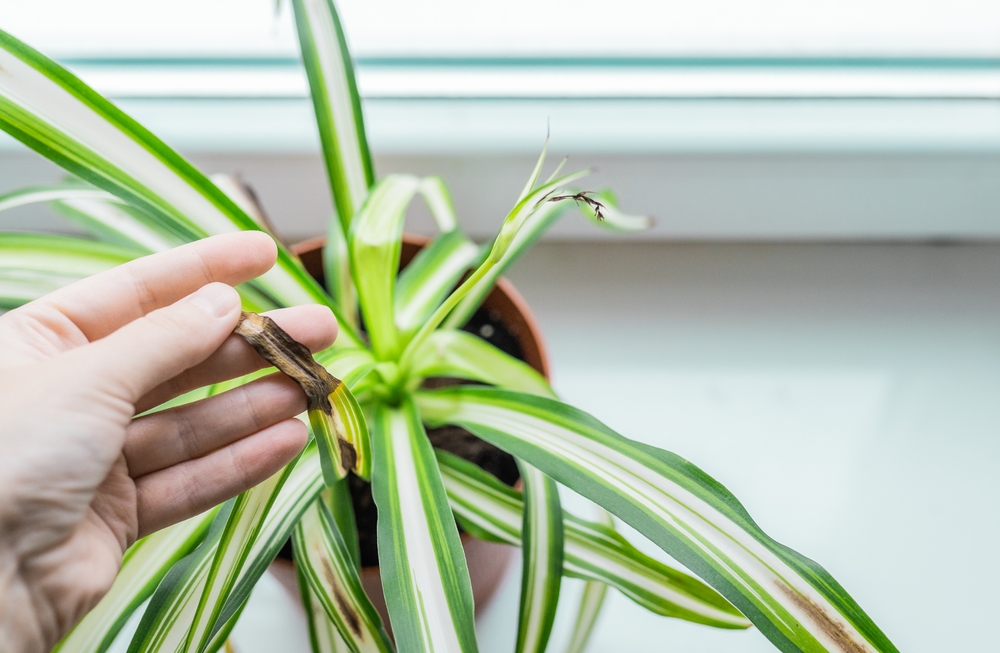
When leaves fall off with barely a touch, it may be due to overwatering. The plant weakens when its roots can no longer hold up the structure. Even healthy-looking leaves may suddenly drop if the base of the plant is rotting from too much moisture.
To prevent leaf drop, avoid letting the soil stay soggy for more than a day or two. Let the soil dry between waterings, and never let the pot sit in standing water.
Soil Staying Wet for Too Long
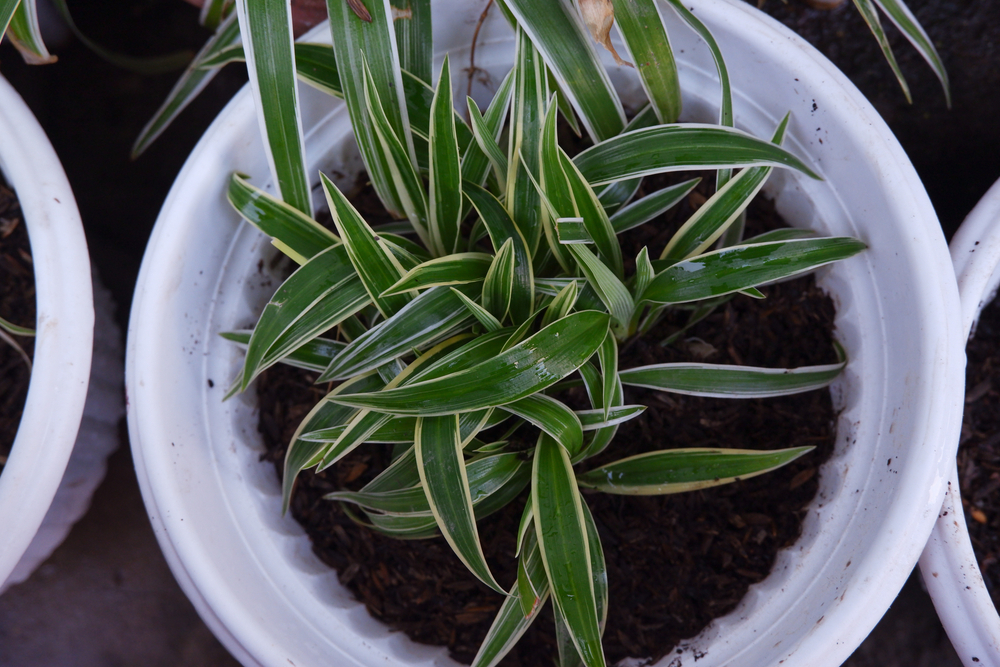
If you notice the soil remains damp days after watering, it means the mix is holding too much water or the drainage is poor. Constant moisture reduces oxygen to the roots, which encourages rot and bacterial growth.
Choose a potting mix made for indoor plants and mix in perlite or sand for better drainage. Make sure your pot has a hole at the bottom and always empty any water that collects in the saucer.
Root Rot

Root rot is one of the most serious outcomes of overwatering. It starts when the roots sit in wet soil for long periods, causing them to become mushy, brown, and foul-smelling. As the rot spreads, the plant loses its ability to absorb nutrients and water.
To treat root rot, remove the plant from the pot, trim away all the damaged roots, and repot it in dry, airy soil. Use a clean pot and water only when the top of the soil feels dry.
No New Growth
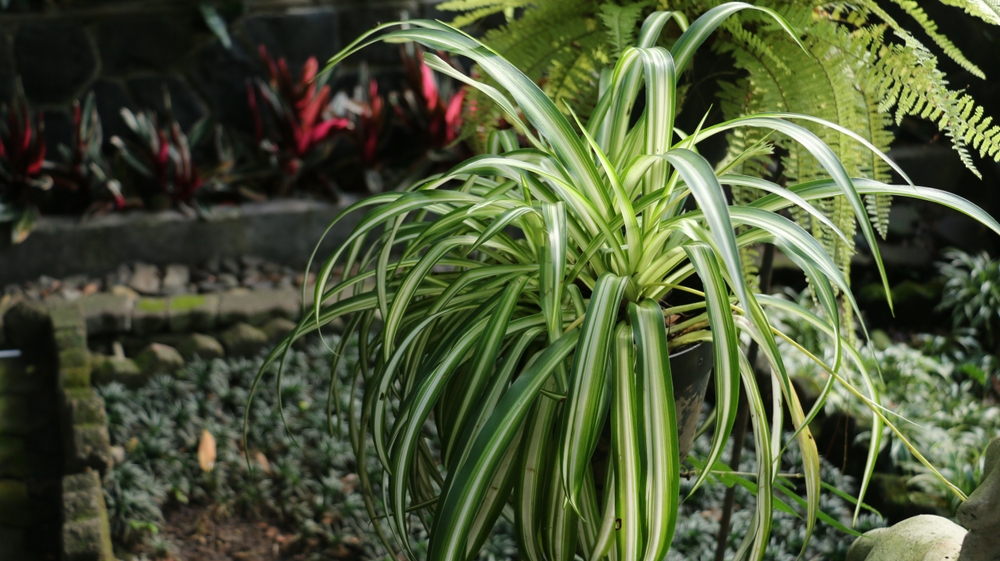
A healthy spider plant regularly produces new leaves and even sends out baby offshoots. If your plant has stopped growing for several weeks or months, that could be a sign that the roots are struggling due to excess moisture. When roots are damaged or suffocated by wet soil, the plant goes into survival mode and halts new development.
To encourage growth again, focus on improving drainage and letting the soil dry out between waterings. You may also need to trim off any damaged roots and refresh the potting mix. Keep the plant in a well-lit spot with good air circulation to support recovery.
Pale or Transparent Leaves
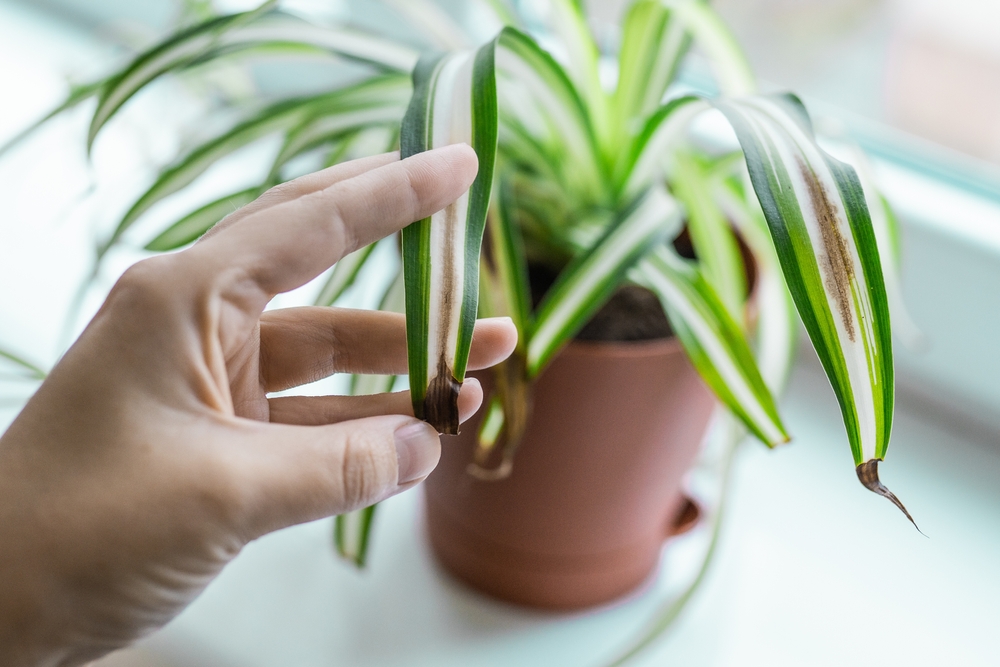
Overwatered spider plants can develop leaves that look lighter than usual or even slightly see-through. This happens when the roots cannot send enough nutrients to support healthy leaf tissue. The plant may also become waterlogged inside, which leads to cellular damage and weakened structure.
To prevent this issue, stick to a regular watering rhythm based on how dry the soil feels rather than a fixed schedule. Remove any leaves that appear pale or glassy, and monitor your watering habits to give the plant time to recover.
This article originally appeared on Avocadu.
